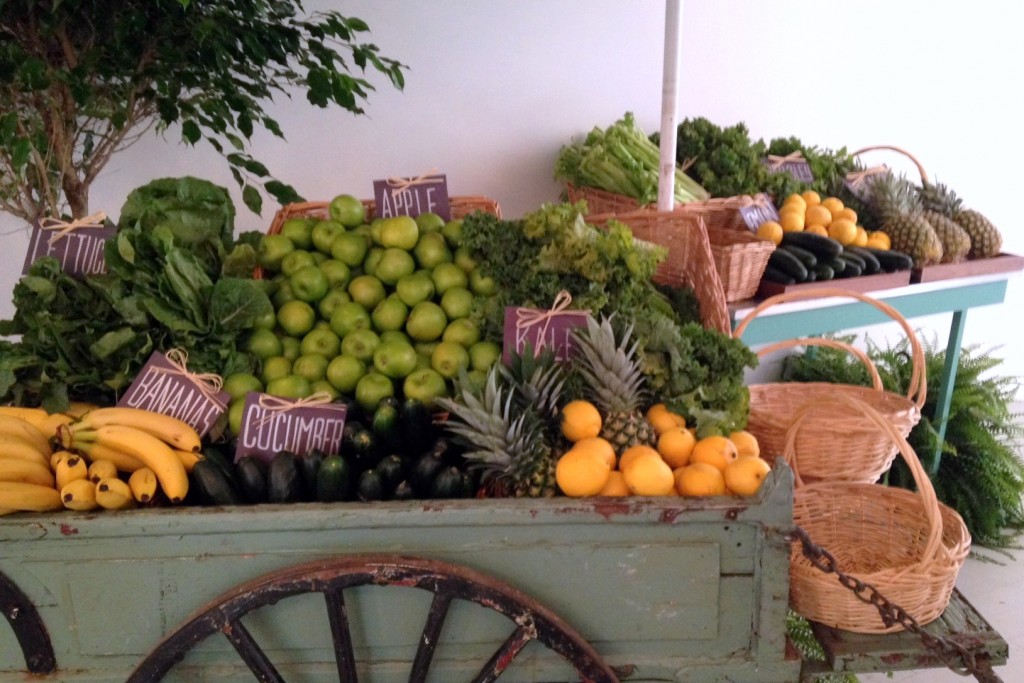 Whether you're a daily green juice drinker or or can't stand the thought of drinking your veggies, you should read this post. I had the chance to concoct the healthiest green juice with the Founder of Juice Generation, Eric Helms, who's reasons for juicing may make you want to start blending your own. Here are his tips on how to create the perfect green juice no matter what your palette can handle.
Whether you're a daily green juice drinker or or can't stand the thought of drinking your veggies, you should read this post. I had the chance to concoct the healthiest green juice with the Founder of Juice Generation, Eric Helms, who's reasons for juicing may make you want to start blending your own. Here are his tips on how to create the perfect green juice no matter what your palette can handle.
"People have preconceived ideas about juicing being time consuming, expensive and messy, but if you have $20 a week, you can have a green juice ready in five minutes every day that won't taste like your front yard," Helms commented.
You can start slowly with spinach and apple, but as your palette adjusts you're going to want to go more and more green simply because of the way it makes you feel. "Unlike coffee, which gives you a spike in energy and then a crash, the energy you get from green juice is sustained throughout the day." The greener you go, the more energy you'll get.
 Step 1: Gather the Freshest Ingredients
Step 1: Gather the Freshest Ingredients
We used 1 cucumber, romaine lettuce, spinach, kale, parsley, 2 celery stalks, a 1/2 an apple and a 1/4 of a lemon. Depending on how much sugar you want to add, adding apples will help sweeten your juice. Try adding two if you're starting out. Lemon helps to cut the taste. Again, depending on your palette and where you are in your green juice journey, you can add as much as you'd like. When possible, buy organic because the skin isn't harmed by pesticides.
Clean all of your produce with cold water and a touch of vinegar to make sure its free of potential chemicals on the skin. All of the nutrients in the greens are held in the leaves, so rid all of the stems and peel your lemon. Keep the skin on the rest as it holds the most nutrients. Don't worry about seeds from apples and lemons though, most juicers have strainers to catch them.
The way you put your produce into your juicer matters. Add the greens first (spinach, parsley, kale) and then add something that will juice like a cucumber to push it down. Repeat this process.
Into it? I thought you would be. Besides sustained energy, green juice is also good for your skin, hair and nails. For more recipes and advice check out Helms's new book, "The Juice Generation: 100 Recipes for Fresh Juices & Superfood Smoothies."



 When paying attention to your health and fitness everyone has their own formula for what works for them. For me, I stay away from numbers. I don't pay attention to the scale or count calories. For me, feeling fit, working out, eating healthy and liking how my clothes fit me works. In case you're into BMI, check this out...
The number calculated from your weight and height to create your body mass index, or BMI, is used by doctors to determine if you’re at a healthy weight. However, even though the number is accurate, exactly what it measures is up for debate.
When paying attention to your health and fitness everyone has their own formula for what works for them. For me, I stay away from numbers. I don't pay attention to the scale or count calories. For me, feeling fit, working out, eating healthy and liking how my clothes fit me works. In case you're into BMI, check this out...
The number calculated from your weight and height to create your body mass index, or BMI, is used by doctors to determine if you’re at a healthy weight. However, even though the number is accurate, exactly what it measures is up for debate.


















